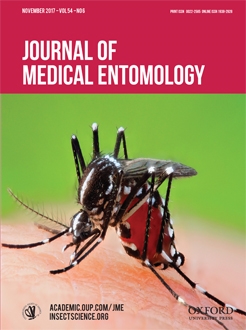Little is known about tick-borne rickettsial pathogens in Belize, Central America. We tested ixodid ticks for the presence of Rickettsia species in three of the six northern and western Belizean districts. Ticks were collected from domestic animals and tick drags over vegetation in 23 different villages in November 2014, February 2015, and May 2015. A total of 2,506 collected ticks were identified to the following species: Dermacentor nitens Neumann (46.69%), Rhipicephalus sanguineus (Latreille) (19.55%), Rhipicephalus microplus (Canestrini) (19.47%), Amblyomma cajennense complex (9.74%), Amblyomma maculatum Koch (3.47%), Amblyomma ovale Koch (0.68%), Ixodes nr affinis (0.16%), Amblyomma nr maculatum (0.12%), and Amblyomma nr oblongoguttatum (0.12%). Ticks were pooled according to species, life stage (larva, nymph, or adult), and location (n = 509) for DNA extraction and screened for genus Rickettsia by quantitative real-time polymerase chain reaction (qPCR). All 42 positive pools were found to be positive for spotted fever group (SFG) Rickettsia in pools of A. cajennense complex (n = 33), A. maculatum (n = 4), A. nr maculatum (n = 1), A. ovale (n = 1), R. sanguineus (n = 1), and I. nr affinis (n = 2). Rickettsia amblyommatis was identified from A. cajennense complex and A. nr maculatum. Rickettsia parkeri was found in A. maculatum, and Rickettsia sp. endosymbiont was detected in I. nr affinis. The presence of infected ticks suggests a risk of tick-borne rickettsioses to humans and animals in Belize. This knowledge can contribute to an effective tick management and disease control program benefiting residents and travelers.
How to translate text using browser tools
25 July 2017
Molecular Detection and Identification of Rickettsia Species in Ticks (Acari: Ixodidae) Collected From Belize, Central America
Suppaluck Polsomboon,
David F. Hoel,
Jittawadee R. Murphy,
Yvonne-Marie Linton,
Maysa Motoki,
Richard G. Robbins,
Kim Bautista,
Ireneo Briceño,
Nicole L. Achee,
John P. Grieco,
Wei-Mei Ching,
Chien-Chung Chao
ACCESS THE FULL ARTICLE
It is not available for individual sale.
This article is only available to subscribers.
It is not available for individual sale.
It is not available for individual sale.

Journal of Medical Entomology
Vol. 54 • No. 6
November 2017
Vol. 54 • No. 6
November 2017
Belize
Central America
Rickettsia
tick




